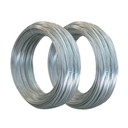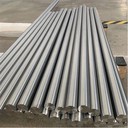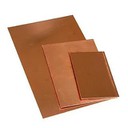Contact Us
- Xinwu District, Wuxi City, Jiangsu Province
- info@szdepu-metals.com
- +86 134 24179016
Stainless Steel Strip
Why Choose Us stainless steel?
One stop solution
Our customer team is highly skilled, motivated and always ready. No matter if you are following up on an order, looking for advice or looking for a bespoke quotation, our team is here to help.
Custom service
With our manufacturing and design capability, it allows us to not only offer standard products, but also products based on customers’ own specific designs.
High quality
As evidence of this quality, we’ve been awarded third-party accreditations including ISO 9001-2015 and EN-1090-2. These independently verify our technical expertise and confirm that we meet standards set by respected regulatory bodies.
Design
Our design engineers have more than 25 years of experience designing and building molds that offer innovative solutions to complex design challenges.
What is a Stainless Steel Strip?
A stainless-steel strip is a flat, thin, and narrow piece of stainless steel that has been rolled and coiled after being produced. It is commonly used in various industries such as automotive, aerospace, construction, and others due to its durability, corrosion resistance, and strength. Stainless-steel strips come in different grades, sizes, and thicknesses and can be used in various applications such as kitchen appliances, surgical instruments, and electrical equipment.
 Brushed Stainless Steel Strips
Brushed Stainless Steel StripsDuring the brushing procedure, stainless steel will lose its capability of reflecting light.The
 Austenitic ASTM 301 304 316 Cold Rolled BA Surface Spring...
Austenitic ASTM 301 304 316 Cold Rolled BA Surface Spring...High durability, protection from corrosion, perfect finish, and complete steady quality .
 Cold Rolled Steel Stainless Steel Coil Dc01 Crc Strip
Cold Rolled Steel Stainless Steel Coil Dc01 Crc StripThickness: 0.002 - 0.125 (0.05mm - 3.18mm). Width: Up to 24 (610mm). Length: Up to 120 (3048mm).
 Brushed Stainless Steel Strips
Brushed Stainless Steel StripsThickness: 0.002 - 0.125 (0.05mm - 3.18mm)Width: Up to 24 (610mm)Length: Up to 120 (3048mm)Surface
 Astm Stainless Steel Strip
Astm Stainless Steel StripThickness: 0.002 - 0.125 (0.05mm - 3.18mm)Width: Up to 24 (610mm)Length: Up to 120 (3048mm)Surface
 Polished Stainless Steel Strips
Polished Stainless Steel StripsThickness: 0.002 - 0.125 (0.05mm - 3.18mm)Width: Up to 24 (610mm)Length: Up to 120 (3048mm)Surface
 321 Stainless Steel Strip
321 Stainless Steel StripThickness: 0.002 - 0.125 (0.05mm - 3.18mm)Width: Up to 24 (610mm)Length: Up to 120 (3048mm)Surface
 304l Stainless Steel Strip
304l Stainless Steel StripMaterial: 304L stainless steel stripChromium: 18-20%Nickel: 8-12%Manganese: 2%Silicon: 1%Carbon:
 201 Stainless Steel Strip
201 Stainless Steel StripMaterial: 201 stainless steel stripChemical composition: 16-18% chromium, 3.5-5.5% nickel, 0.08%
 420 Stainless Strip
420 Stainless StripMaterial: 420 stainless steel stripTensile strength: 655 MPaYield strength: 345 MPaElongation:
 Stainless Steel Strip 20mm
Stainless Steel Strip 20mmMaterial: Stainless SteelThickness: 0.3mm - 3mmWidth: 20mmLength: Customizable (depending on
Benefits of Stainless Steel Strip
Corrosion resistance
Stainless steel strip is resistant to corrosion from a wide range of chemicals, making it a top choice for use in industries where corrosion is a problem.
Heat resistance
Stainless steel strip can withstand high temperatures without losing its shape or becoming brittle.
Strength
Stainless steel strip is known for its high strength and durability, making it a preferred material for use in harsh environments or applications where a lot of wear and tear is expected.
Versatility
Stainless steel strip can be easily fabricated into different shapes and sizes, making it a versatile material that can be used in a wide range of applications.
Hygiene
Stainless steel strip is a non-porous material that doesn't harbor bacteria or other harmful microorganisms. This makes it perfect for use in industries that require strict hygiene protocols.
Low maintenance
Stainless steel strip requires very little maintenance and can be easily cleaned using common household cleaning products.
Types of Stainless Steel Strip
Grade 301 Stainless Steel
Grade 301 stainless steel is comprised of additions of chromium and nickel and has exceptionally corrosion resistance. It is both strong and ductile when cold worked. With these properties, grade 301 stainless steel is commonly used in welding, forming and drawing.
Grade 304 Stainless Steel
The most common variety of stainless steel, and one that is frequently used in Marlin Steel’s custom wire basket designs because of its versatility. Even among steel alloys, grade 304 stainless steel is noteworthy for its high tensile strength—roughly 621 MPa (90 ksi). Like most stainless steel, grade 304 has a high maximum operating temperature (about 870˚C). This combination of high tensile strength, temperature resistance, and corrosion resistance makes grade 304 stainless steel ideal for a wide variety of applications.
Grade 316 Stainless Steel
Another common variety of austenitic stainless steel, grade 316 stainless has a high tensile strength of 579 MPa (84 ksi) and a maximum use temperature of around 800˚C (1,472˚F). While having a lower tensile strength and temperature tolerance than grade 304 stainless steel, grade 316 stainless has a better resistance to chlorides (like salt) than 304 alloy does. This makes it a preferred choice for any application involving exposure to salt or other chlorides.
Grade 321 Stainless Steel
Grade 321 stainless steel has added titanium to withstand corrosion from chemicals and high temperatures. It can resist oxidation up to 1500 degrees fahrenheit and has higher stress rupture properties than grade 304 stainless steel. It is also non-magnetic and can retain its strength at low temperatures.
Grade 420 Stainless Steel
This grade has the highest hardness among all the stainless steel grades with 12% chromium - 50HRC. Grade 420 also offers good ductility and corrosion resistance, especially to alkalis, fresh water, foods, and mild acids. Cutlery is commonly made with grade 420 stainless steel due to its corrosion resistance, though pitting can occur with continued exposure to certain food substances.
Grade 430 Stainless Steel
While not as strong as either of the austenitic alloys highlighted above, grade 430 stainless steel does have an especially good resistance against nitric acid. Although the tensile strength of 450 MPa (65 ksi) is lower than most austenitic stainless steels, it’s still more than strong enough for many heavy-duty applications.
Material of Stainless Steel Strip
Austenitic stainless steel
This is the most common grade of stainless steel used for strip production. It includes grades such as 304, 316, and 321.
Ferritic stainless steel
This type of stainless steel is less corrosion-resistant than austenitic stainless steel, but it is more magnetic. Examples of ferritic stainless steel grades include 430 and 441.
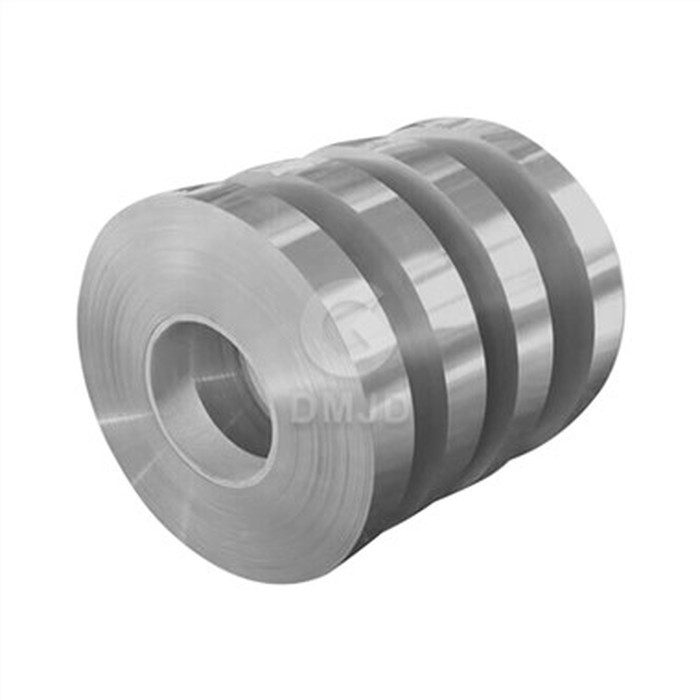

Martensitic stainless steel
This type of stainless steel is hard and strong, but it has lower corrosion resistance than austenitic stainless steel. Examples of martensitic stainless steel grades include 410 and 420.
Duplex stainless steel
This type of stainless steel has both austenitic and ferritic properties, making it strong and highly resistant to corrosion. Examples of duplex stainless steel grades include 2205 and 2507.
Application of Stainless Steel Strip
Automotive industries
Cold Rolled Stainless Steel Strips is one of a popular product in automobile industries that is used for body panels and the other automotive components. Using stamping methods the cold-rolled stainless steel strips can be formed into required shape panels or other required components.
Building & construction materials
Stainless Steel products are most broadly used and can be easily recycled. There are different manufacturing technologies for producing high-quality stainless steel strips that offer great advantages to building and construction industries. Stainless Steel Strips are used to make the structure of building or constructions and also used stainless steel strips for doors.
Refrigerators & air conditioners
As the stainless steel strips have excellent thermodynamic properties like thermal conductivity, heat capacity, and melting points, as we discussed earlier. This stainless steel strip is used between the side by side refrigerators. Many times SS Strips can be used to manufacture condensers in refrigerators and air conditioners.
Medical industry
Stainless steel strips are used in the medical industry for manufacturing various surgical instruments, orthotic devices, and implants.
Aerospace industry
Stainless steel strips are used in the aerospace industry for making various components such as aircraft engine parts, fasteners, and hydraulic tubing.
Food industry
Stainless steel strips are used in the food industry for making food processing equipment, heat exchangers, and storage tanks, as it is corrosion resistant and easy to clean.
Stainless Steel Strip Craftsmanship
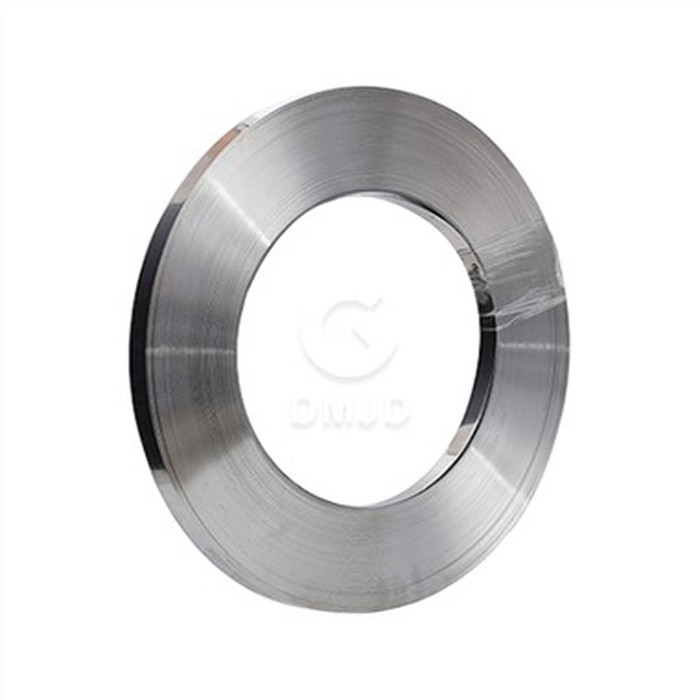
01.Raw material selection
02.Slitting
03.Annealing
04.Rolling
05.Pickling
06.Polishing
How to maintain Stainless Steel Strip
Clean regularly
Stainless steel strips require regular cleaning to maintain their shine and resist rust and corrosion. It is recommended to clean them at least once a week with warm water and mild dish soap.
Dry thoroughly
After washing, make sure to dry the strips thoroughly with a soft cloth or paper towel to prevent water spots or stains from forming.
Avoid harsh chemicals
Avoid using harsh cleaning chemicals, chlorine-based cleaners, or abrasive scrubbers on stainless steel strips, as they can scratch or damage the surface.
Use specialized cleaners
You can use specialized stainless steel cleaners or polishes to maintain the appearance and integrity of stainless steel strips. Follow the manufacturer's instructions for safe use.
Handle with care
Be careful not to scratch or dent the strips when handling or moving them. Always use appropriate tools and gloves to protect the surface.
Store properly
Store stainless steel strips in a dry, cool place to prevent moisture buildup or exposure to corrosive materials. Wrap them in a soft cloth or paper to protect them from scratches or damage.
How to produce a Stainless Steel Strip?
Raw Material Preparation
Checking the stainless steel coils raw materials after they reach our factory, it is called incoming quality control.Checking details include products thickness tolerance, width of coil, outside packaging, label marks, inside surface finish, chemical components, etc.
Rolling And Bright Annealing Process
- The first time rolling process: Our workers operate the advanced mill calender to make the hot rolled stainless steel mother coil with a thickness of 2.0mm~3.0mm into a stainless steel strip coil with a thickness range of 0.2mm~1.0mm. The first time bright annealing process: The 0.2mm~1.0mm thickness stainless steel strip is processed for bright annealing treatment. The strip can be fast cooled by the the continuous annealing line. The traveling speed of the stainless steel strip on the line is around 60m~80m/min.
- The second time rolling process: After first time bright annealing process, continuing rolling the stainless steel strip with 0.2mm~1.0mm thickness into a new stainless steel strip with a thickness of 0.1mm~0.3mm.
- The third time rolling process: After second time bright annealing process, continuing rolling the stainless steel strip with 0.1mm~0.3mm thickness into a new stainless steel strip with a thickness of 0.06mm~0.15mm.
- The forth time rolling process: After third time bright annealing process, continuing rolling the stainless steel strip with 0.06mm~0.15mm thickness into a new stainless steel strip foil with a thickness of 0.02mm~0.1mm.
Degrease Cleaning Process
Cleaning the residual oil on the surface of the stainless steel strip due to the stains during the rolling process.The principle is to use the chemical reaction (saponification reaction) between the alkaline agent and the grease on the surface of the steel strip to remove the grease.The speed of the whole unit line is about 60meters/min, which can handle stainless steel strip with 0.02mm-1.0mm thickness.
Tension Straightening Process
When stainless steel strip is rolled on a 20-high rolling mill with a thickness of 0.02mm-0.8mm, it is a difficult-to-deform metal.Defects formed when the reduction of half the width of the steel strip is slightly larger.It behaves like a very wide unilateral wave. This wave has a very low amplitude and a very long wavelength.In this process, the steel strip passes through a set of slightly offset rollers and bends, causing the steel strip to slightly stretch.After straightening, the stress distribution in the entire steel strip is more uniform and the plate shape is more straight.
Slitting Process
For different thickness of strip coils slitting process, the small and large slitting machines will be used by our team. Our larger slitting machines can cut hot rolled mother coils from mill origin directly. Thickness is from 2mm to 6mm.And meantime we use the small machines to cut the narrow strip coils as precision strips. Thickness is from 0.02mm to 1.0mm.Our workers will make adjustments between coils and cutting tools when they are preparing to slit in order to minimize the burr of strips edge as much as possible.
Inspection Process
We have full inspection and routing inspection during metal strips mass production.Checking the stainless steel strips after they are produced carefully.The advanced inspection and measurement equipment will support every inspection process.After all end products are finished, the quality control department deal with the following inspections, such as metallographic analysis, mechanical performance testing, straightness testing, plate shape, surface finish, thickness and width tolerances inspection.
Packaging Process
Eye to eye or eye to wall types of packaging strips will be adopted before shipment.The surface finish of metal strips will be packaged with waterproof paper. Then coating the PVC film on this paper.After that, the banding strap will be used for fastening pallets and strips products.Before placing the metal strips into the wooden case, the strips are packaged with perfect packaging.Wooden case and four corners shall not be smaller than the outer diameter of the total strips.In addition, clear labels are tagged on the outside of these sea standard packages for easy identification of these metal strips specifications and quality information.
Factors to Consider When Selecting Stainless Steel Strip
Grade of stainless steel
Stainless steel is available in different grades, each offering different properties and characteristics. The grade of stainless steel strip you choose will depend on the application and the environment in which it will be used. For example, a highly corrosive environment may require a stainless steel strip with a higher level of corrosion resistance such as 316 or 904L grade.
Thickness and width
The thickness and width of stainless steel strip are crucial factors that determine its strength and suitability for the desired application. Thicker strips are generally more durable and have higher strength, but they may not be suitable for applications requiring flexibility. On the other hand, thinner strips offer greater flexibility but may lack the necessary strength for certain applications. Similarly, the width of the strip should be considered based on the specific requirements of the application.
Surface finish
Stainless steel strips come in different surface finishes, each serving a specific purpose. Common finishes include brushed, matte, and mirror finishes. The choice of surface finish will depend on the aesthetic requirements as well as the functionality of the strip in the intended application. For example, a mirror finish might be preferred for decorative purposes, while a brushed finish may be more suitable for applications requiring a non-reflective surface.
Tolerance and flatness
Precision and accuracy are vital in many applications where stainless steel strip is used. Therefore, it is important to consider the tolerance and flatness requirements of the strip. Tolerance refers to the permissible variation in dimensions, while flatness relates to the overall surface flatness. Assessing these factors is crucial to ensure that the stainless steel strip meets the required specifications and can be effectively utilized in its intended application.
Corrosion resistance
One of the main advantages of stainless steel strip is its resistance to corrosion. However, the level of corrosion resistance can vary depending on the grade and composition of the stainless steel. It is essential to consider the corrosive environment in which the strip will be used and select a grade with suitable corrosion resistance. In addition, factors such as the presence of chlorides, acids, or high temperatures should also be taken into account.
Cost
While cost should not be the sole determining factor, it is an important consideration when selecting stainless steel strip. The cost of stainless steel strips can vary depending on factors such as grade, finish, thickness, and width. It is important to find a balance between quality and cost-effectiveness to ensure that you are getting the best value for your money.
Our Factory
With a vast stock holding of stainless steel sheets, coils, strips, tubes, and bars, we have a wide range of products readily available to meet your immediate needs. Our comprehensive inventory ensures quick access to the materials you require.

Frequently Asked Questions Stainless Steel Strip
As one of the leading stainless steel strip manufacturers and suppliers in China, we warmly welcome you to buy or wholesale cheap stainless steel strip in stock here from our factory. All customized products are with high quality and competitive price. For free sample, contact us now.

